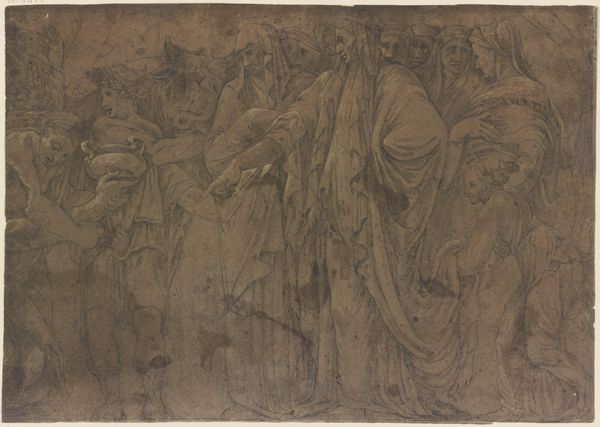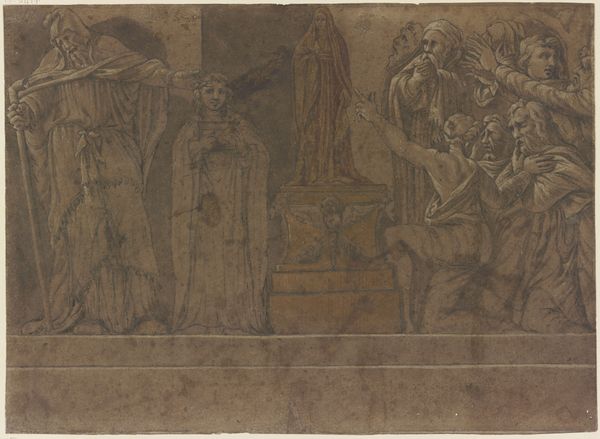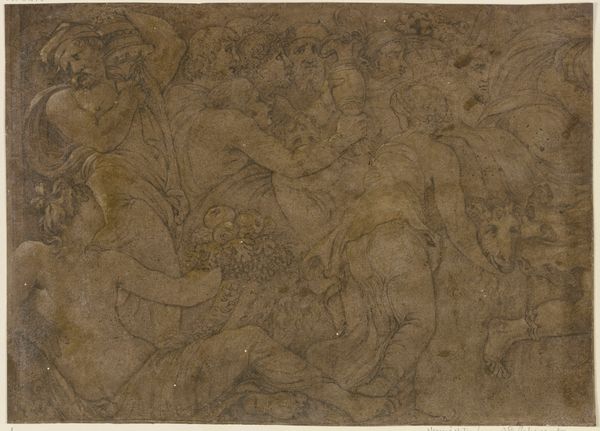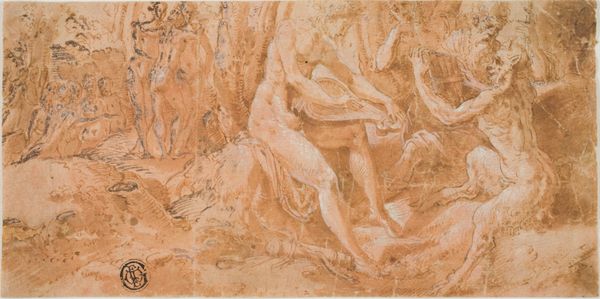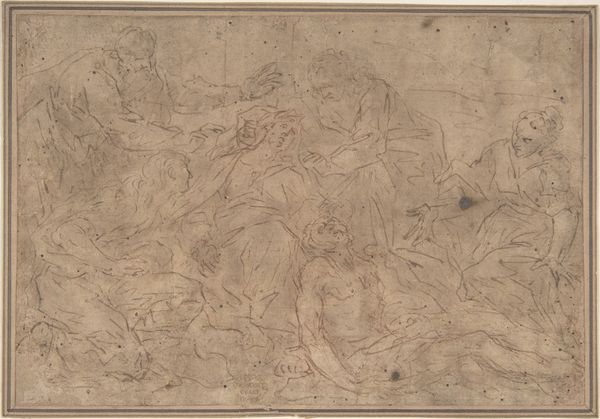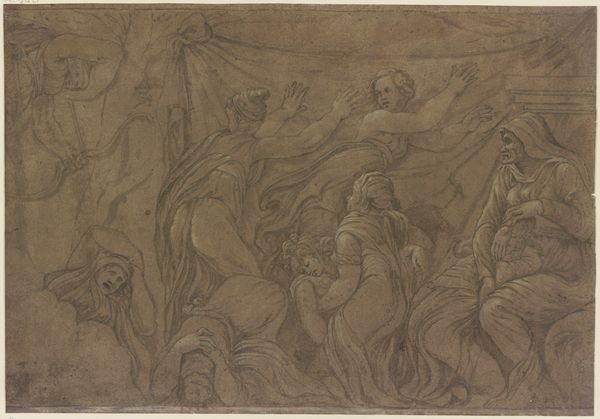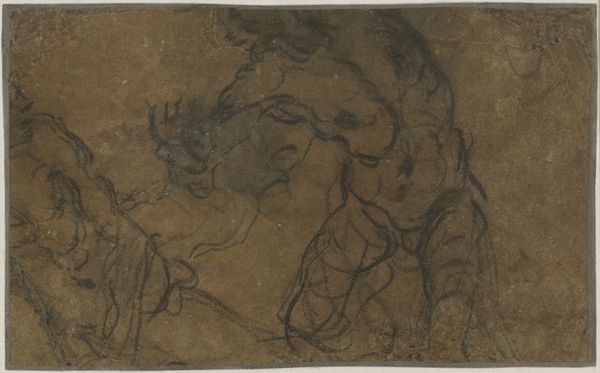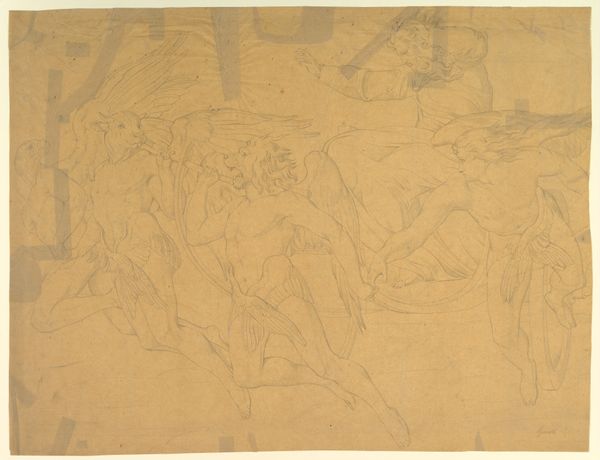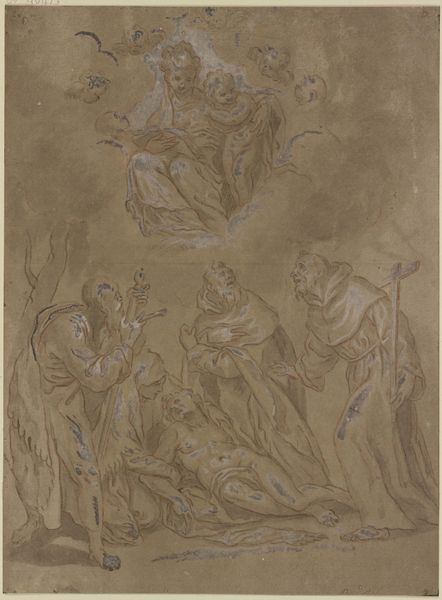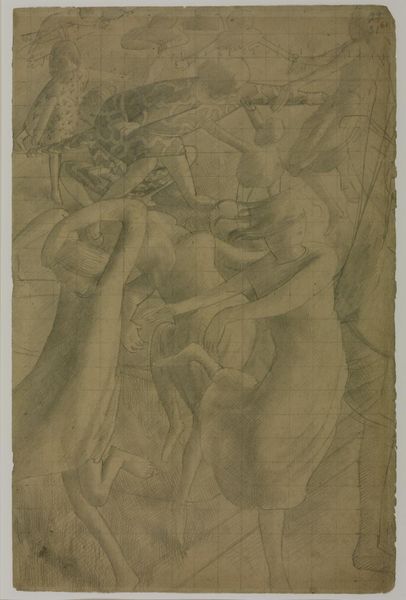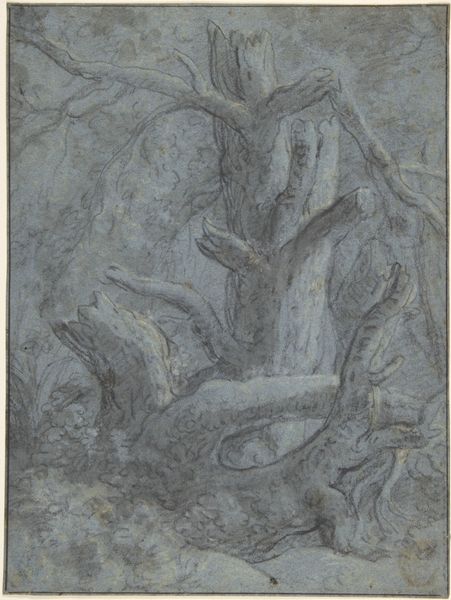
Apollo rächt seine Schwester Diana und tötet die Töchter der Niobe, aus dem verlorenen Niobidenfries an der Fassade des Palazzo Milesi in Rom 1656
0:00
0:00
drawing, paper, ink
#
drawing
#
high-renaissance
#
baroque
#
figuration
#
paper
#
ink
#
14_17th-century
#
history-painting
Copyright: Public Domain
This drawing by Polidoro da Caravaggio is a fragment of a fresco made around 1526 in Rome, using techniques of mural painting. While it appears to be just a simple drawing on paper, we have to consider the context of its making. Fresco is not a portable medium; it is not an artwork that can be made in a studio, and then shipped somewhere else. Instead, a fresco must be made in situ, as an integral part of a building. This one was part of a frieze that decorated the facade of a Roman palazzo. Polidoro would have been working high up on scaffolding, directly onto a specially prepared plaster surface. This was a very physical process requiring immense skill and precision. The drawing is thus a record of a grand artistic endeavour that, through the laborious skills of fresco painting, connected art directly to its architectural and social context. It prompts us to think about how works of art can shape our experience of the environment.
Comments
No comments
Be the first to comment and join the conversation on the ultimate creative platform.
